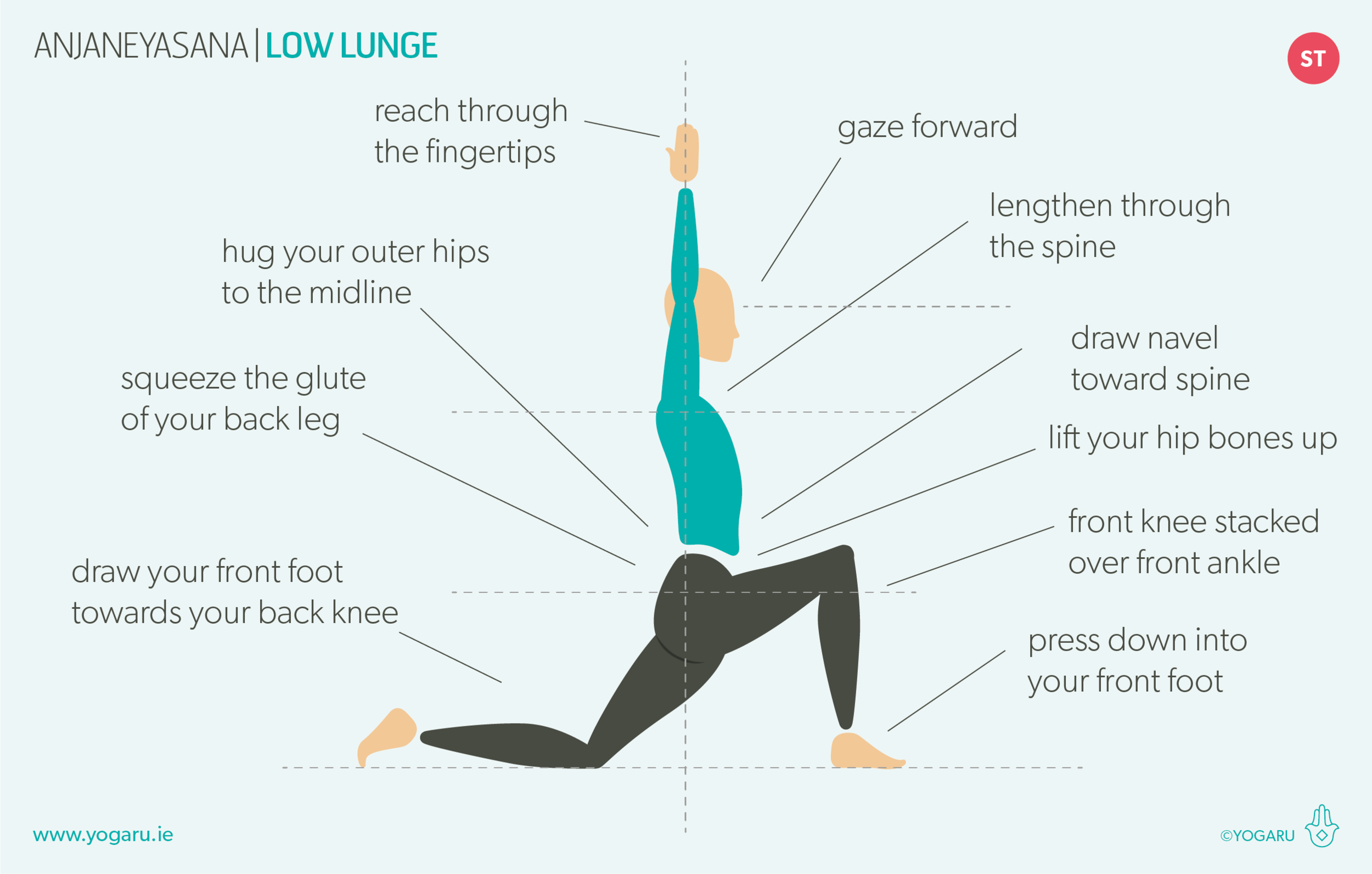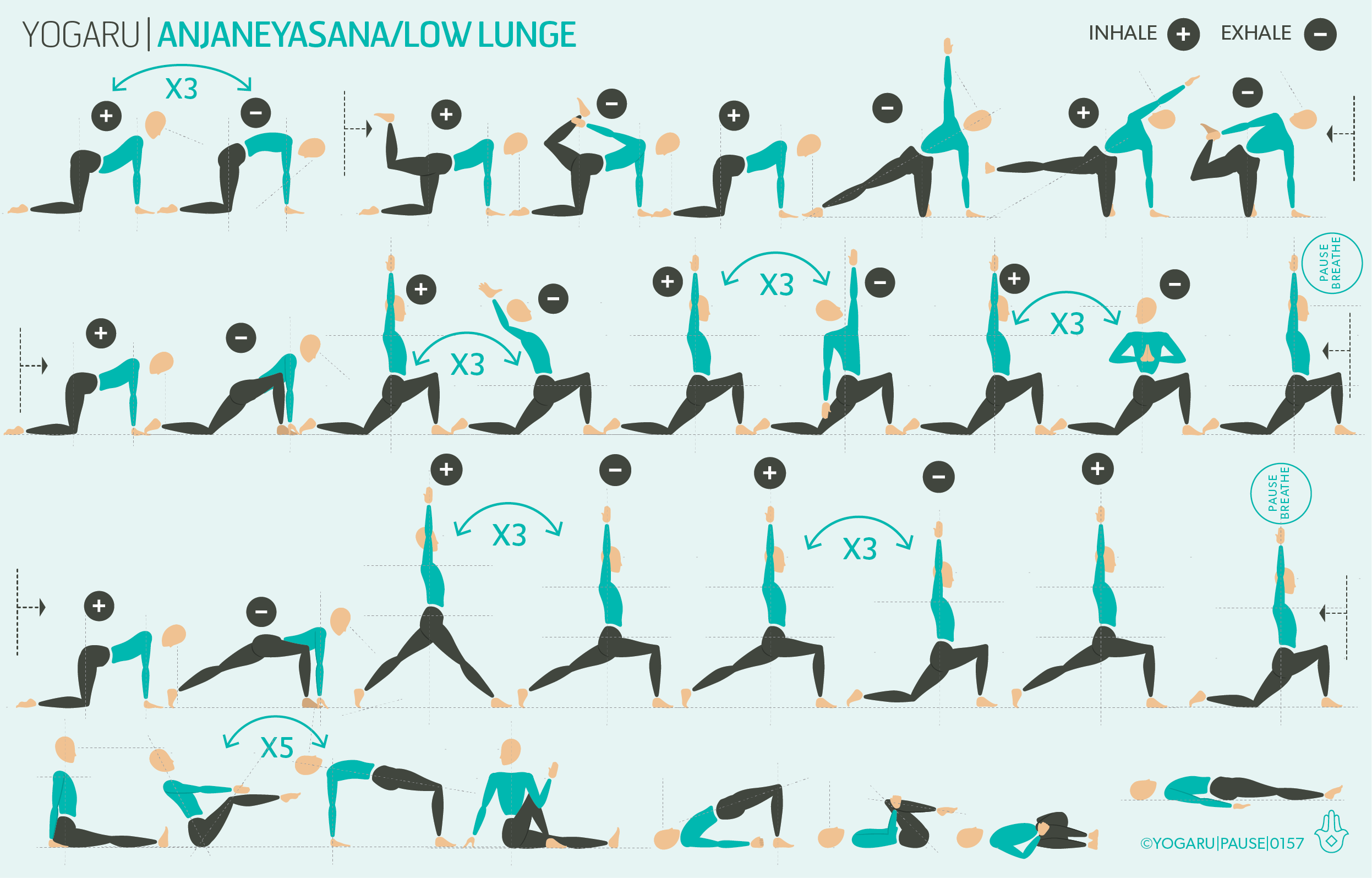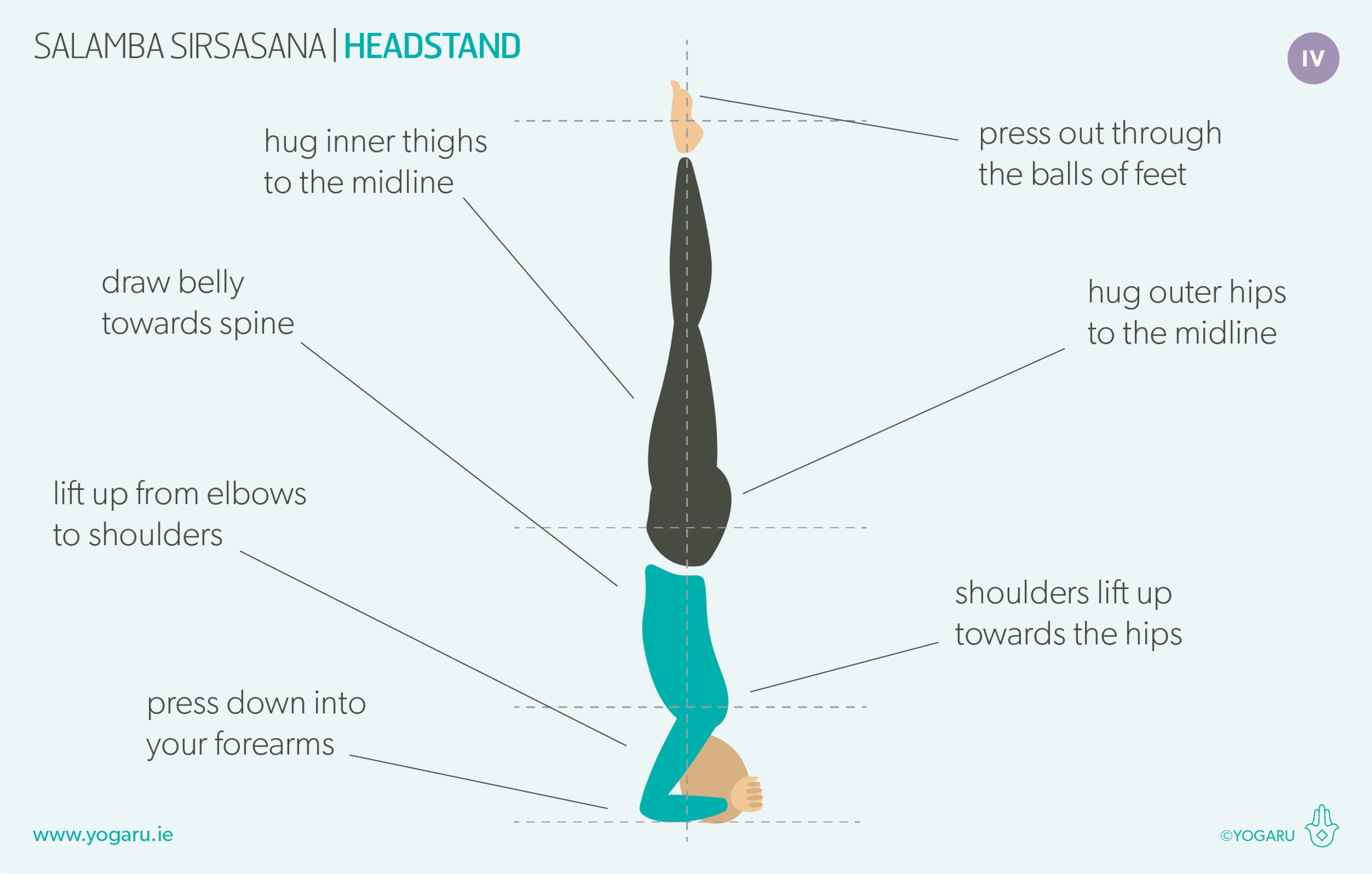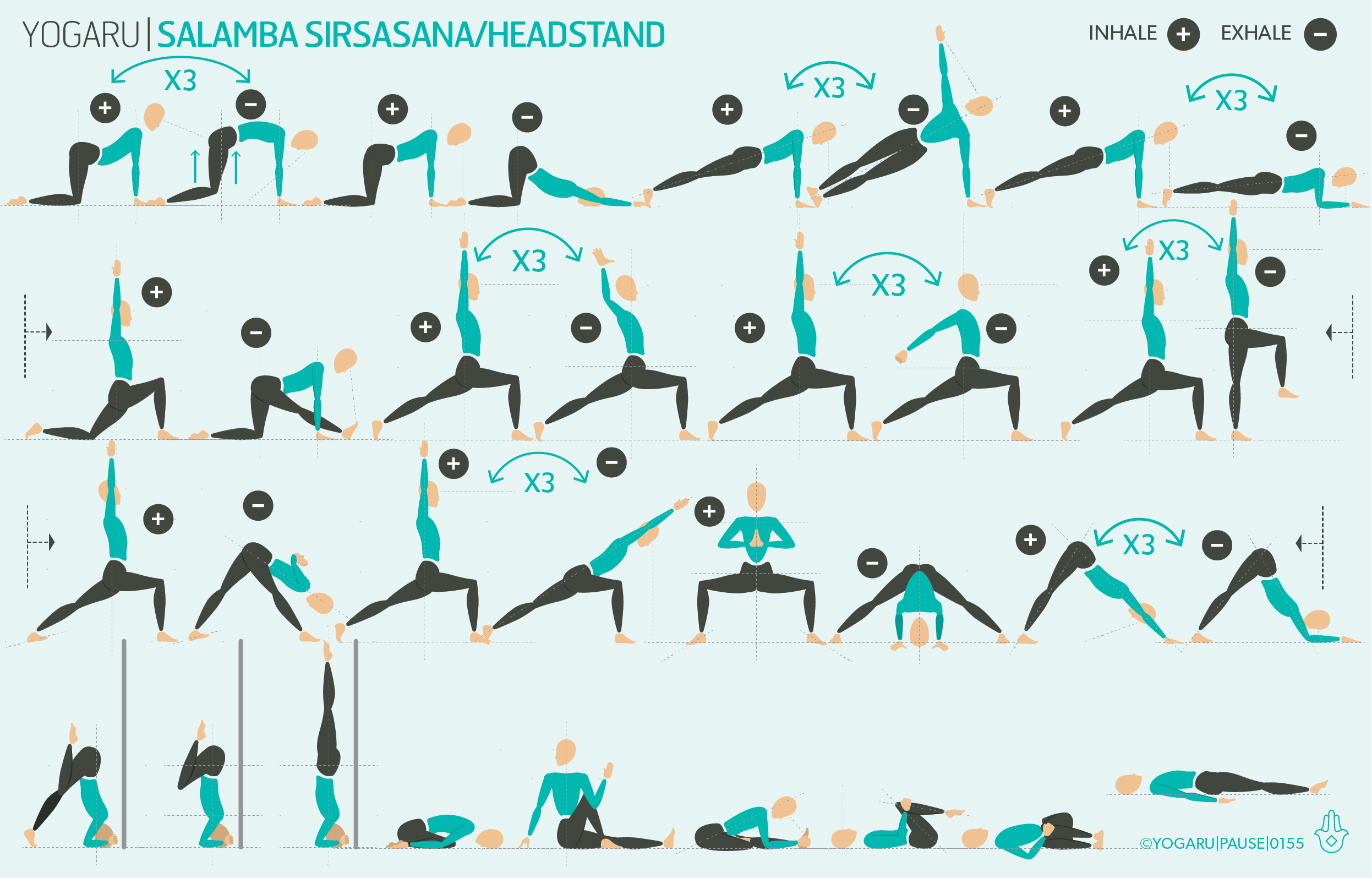THE PSOAS MUSCLE
Anjaneyasana/Low Lunge is a lovely heart opening pose to add into your practice if you have been sitting for long periods of time and are feeling tightness in the hip flexors. When we sit we shorten the front muscles of the hips called the hip flexors or more specifically the psoas muscle. This muscle connects the upper and lower body, its job is mainly to lift the leg to walk and in movement. It is also strongly connected to the ‘fight or flight’ nervous system response as it prepares the body to fight back or take flight. When it is tight from something as simple as sitting, or repeated flexion from sports like cycling, it sends ‘fight or flight’ signals to the nervous system and causes this physical tension to become mental tension too. Lengthening out the psoas in poses like Anjaneyasana/Low Lunge helps to break this cycle and relieve this built up physical and mental tension.
Anjaneyasana/Low Lunge is also a very good pose to prepare the body for its sister pose Ashta Chandrasana/Crescent Pose. Anjaneyasana/Low Lunge is the same pose with the back knee down rather than lifted. This gives you the opportunity to explore the stretching and strengthening components of the pose without the effort of the standing and balancing.
THE BENEFITS OF ANJANEYASANA/LOW LUNGE
Anjaneyasana/Low Lunge stretches the inner groin, quad and the hip flexor of the back leg, and the glute of the front leg; and the strengthens the spine, shoulders, hip flexor and quads of the front leg; and glutes and hamstrings of the back leg. You may feel a slight stretch in the hamstring of the front leg but as the leg is bent it will mainly be the glutes stretching. Similar to Ashta Chandrasana/Crescent Moon it also builds focus, heat, stamina, strength, increases circulation, metabolism, improves posture, spinal health and coordination. There are two ways to approach Anjaneyasana/Low Lunge. The first approach, and my preferred option, stretches the front hip area of the back leg by keeping the pelvis stacked, squeezing the buttocks muscle and concentrating on lifting the pointy hip bones up. The second approach stretches the inner groin of the back leg by bending the front knee beyond the front ankle and dipping the pelvis down. In this version it is important to lengthen through the spine and ensure you distribute the backbend equally to avoid overarching into the lower back. Regardless of which version you take, it is important to support the descent of the hips with the muscles of the hips. Allowing gravity to take over in this extended position can compromise the connective tissue of the tendons at the top of the muscles. You can support your hip muscles by pressing your front foot into the ground and scissoring it back towards your back knee, you hug your outer hips to the midline and zip the seam of your core up from your public bone to your sternum.
EXPLORING ANJANEYASANA/LOW LUNGE IN YOUR PRACTICE
This sequence starts by building a blueprint for Anjaneyasana/Low Lunge with a warm up that opens the front of the hips and strengthens the spine with some poses where we hold the back leg. Adding some extended arms to the poses too to build shoulder strength. When you reach your first Anjaneyasana/Low Lunge, pause here before you start into the three mini flows, and try out the two different options of the peak pose as described above and notice where you feel a stretch and what you feel strengthening in each. At the end of each standing flow you have an opportunity to take the peak pose and pause for a few breaths, notice do you feel more at ease in the pose as you progress through the practice.
ALIGNMENT CUES
Remember to use the supportive muscles of the hips throughout this sequence to contain your Anjaneyasana/Low Lunge for strong connective tissue and muscles with longevity.
Have a read of the tips below and either print out the sequence or save it onto your device:
From Adho Mukha Svanasana, inhale, step your right foot forward just inside your right hand, lower your left knee to the ground, back leg firm.
Hug your outer hips to the midline, gently bend your front knee and lower your hips towards the ground, exhale here.
Inhale, reach your arm up high shoulder width apart or palms together.
Draw your navel towards your spine, broaden through the collarbones, lengthen through your spine to the tip of your crown, gaze forward or to your fingertips.
To save the images for personal use click and hold down the image until the ‘save image’ option appears; on Mac hold down ‘control’ and click the image to get the option box; on PC right click on the image to get the option box. Scroll down in the ‘option box’ and click ‘save image’.
Ruth Delahunty Yogaru






